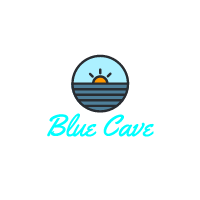The local community near the Blue Lagoon is warm, welcoming, and deeply connected to the sea and tourism. They value their natural environment and take pride in their cultural heritage.
Are there any local traditions or festivals near the Blue Lagoon?
Yes, local traditions and festivals, such as the Fishermen’s Nights in some towns and villages, celebrate the town’s maritime heritage with music, food, and cultural events. Most towns and villages have their traditions.
What languages are spoken by the locals at the Blue Lagoon?
The language spoken at the Plava Laguna is Croatian, but some locals speak English, especially those involved in the tourism industry.
What is the local cuisine like near the Blue Lagoon?
The local cuisine features fresh seafood, grilled meats, and traditional Croatian dishes like peka (meat and vegetables cooked under a bell-like dome) and brodet (fish stew).
Blue Cave, Blue Lagoon & Hvar – Croatia vlog
Are the local communities involved in preserving the Blue Lagoon?
Yes, local communities actively preserve the Blue Lagoon.
What types of local products are made near the Blue Lagoon?
Products on bigger surrounding islands include olive oil, wine, honey, lavender products, and handmade crafts.
What is the local attitude towards tourists near the Blue Lagoon?
The local community is generally very friendly and hospitable towards tourists, appreciating the economic benefits tourism brings.
How can I respect local customs and traditions near the Blue Lagoon?
Be respectful to locals, don’t litter, and remember you’re a guest in Croatia.
Are there any local legends or stories about the Blue Lagoon?
No, there are no famous legends or stories about the lagoon.
What is the main religion practiced by the local community around the Blue Lagoon?
The main religion is Roman Catholicism, with many local traditions and festivals reflecting this faith.
Are there local community projects or initiatives that tourists can participate in?
No, there are no community projects tourists can participate in at this time.
Are there markets where I can buy local goods?
Yes, there are local markets in Komiza and Vis where you can buy different local products. There are also stands selling local products of various kinds.
How does the local community benefit from tourism to the Blue Lagoon?
Tourism provides economic benefits through job creation, business opportunities, and the sale of local goods and services.
Are there local schools near the Blue Lagoon?
No, there are no local schools close to the lagoon. However, there are schools on some of the bigger surrounding islands like Šolta, but most are on the mainland.
How do locals commute in the area around the Blue Lagoon?
Locals use cars, and scooters, to traverse the island, and boats or ferries to commute between the islands and to the mainland.
What is the local architecture like near the Blue Lagoon?
The local architecture features traditional stone houses, narrow streets, and historic buildings with Mediterranean influences.
Is it safe for tourists in the communities near the Blue Lagoon?
Yes, it is generally safe for tourists in Croatia, but as with any destination, stay aware of your surroundings and follow local guidelines.
What is the best way to interact with the local community?
The best way to interact is by being respectful, learning a few basic phrases in Croatian, and participating in local events and activities.
Are there any dress codes I should be aware of at the Blue Lagoon?
Dress modestly when visiting religious sites, towns, and villages, but casual beachwear is acceptable at the beach or other swimming places.
It’s not too hard to find what to wear.
Is it common to tip in the local communities near the Blue Lagoon?
Tipping is appreciated but not mandatory. A 10-15% tip in restaurants and for services is generally well-received but not something necessary.
How can I learn more about the history of the local community at the Blue Lagoon?
Visit local museums, talk to tour guides, and explore historical sites in Komiza and Vis to learn more about the area’s history.
What is the best time to visit to experience local culture near the Plava Laguna?
The best time to visit is during the summer months, which offer a glimpse into the vibrant local culture.
